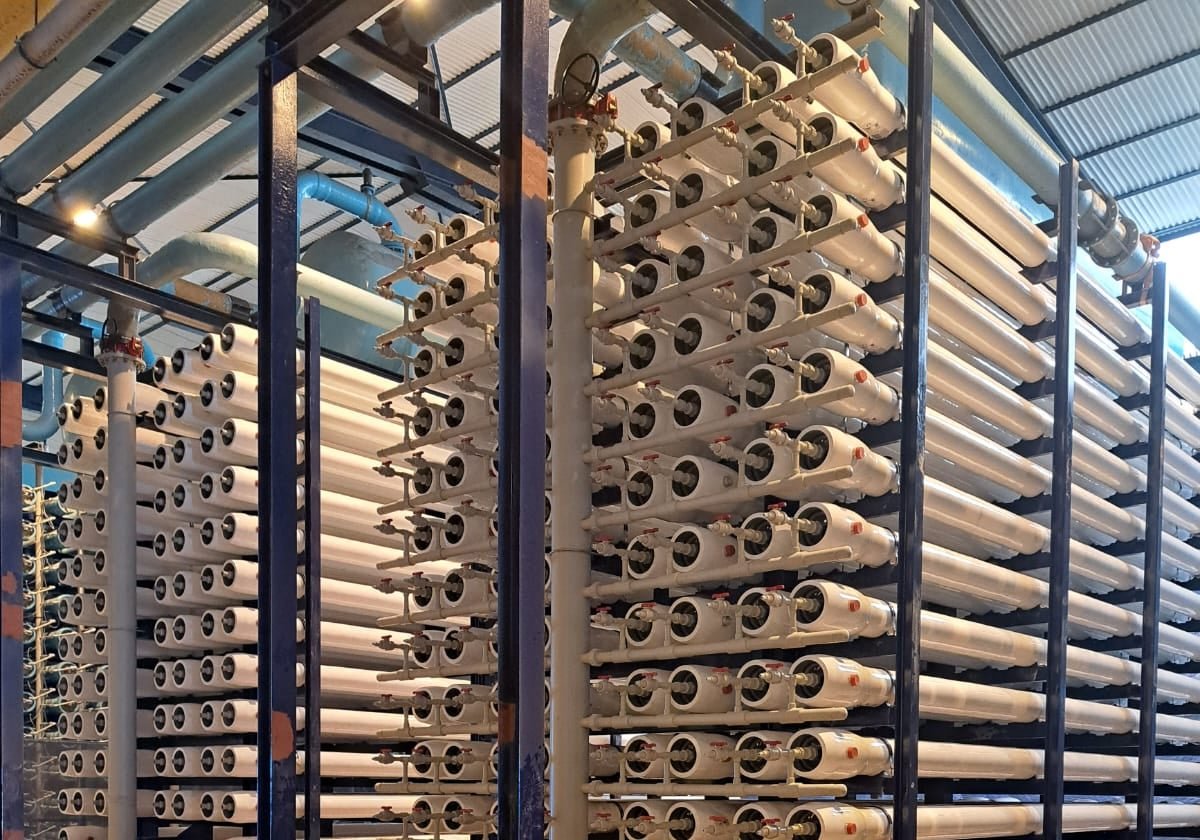Final Phase of Marbella Desalination Plant Upgrade Underway
The much-anticipated upgrade of the Marbella desalination plant, located on the western strip of the Costa del Sol, is now in its final phase. The project, which is expected to be completed by the end of March, aims to restore the plant’s original capacity of 20 million cubic metres, a significant increase from its current six hectometres.
Regional Ministry of Agriculture and Acosol Lead the Upgrade
The regional ministry of agriculture, in collaboration with water supply company Acosol, has been overseeing the upgrade in two phases. The first phase was successfully completed last autumn, and the second phase, which is already 50% complete, is set to be finished by the end of March. This information comes from sources within the department led by Junta minister Ramón Fernández Pacheco. The second phase of the project was contracted for 4.36 million euros.
Marbella Desalination Plant: A Brief History
The Marbella desalination plant was first activated in 2005 after being recovered by the ministry of environment, then led by Cristina Narbona. The main challenge was maintaining the plant’s high performance during periods of drought without the usual annual rest breaks for fine-tuning. However, an unexpected complication arose due to a delay in receiving materials and components for the plant, caused by the crisis in the Red Sea and the Suez Canal.
Upgrade Work Reduces Salt Content by Half
The upgrade work includes tests to verify the operation of the desalination plant. So far, the salt content of the water produced has been reduced by half, with one of the lines producing water with a salt level of 320 microsiemens/cm. This is the lowest salt level in the Malaga province, second only to Antequera. Each new line is producing 304m3 of water per hour.
Improving Water Quality and Increasing Capacity
Another important aspect of the upgrade is the renewal of the desalination plant’s sand filters. This will allow a water pre-treatment capacity of six to eight lines, which is the maximum available to the plant in Marbella. The contractor for the seven-million-euro project is Medio Ambiente, Residuos y Agua Marea.
Desalination Plants: A Stable Water Supply
Desalination plants provide a stable water supply where they operate, although they are not suitable for large variations, such as meeting sporadic peaks. However, their modular design allows them to operate at maximum or reduced performance. Their production capacity means that more water can be saved from the reservoir during winter, as they can provide 50% of the supply with far fewer people on the coast.
Addressing a Cyclical Problem
The upgraded desalination plant in Marbella is also intended to solve a recurring problem that has always kept Acosol’s technicians on their toes. The desalinated water is mixed with raw water from the reservoir and sent to the Verde water treatment plant. When the reservoir water contains high concentrations of organic matter, a chemical reaction occurs with the desalinated water, producing potentially carcinogenic trihalomethanes. The control of these elements is in real time, so there is no risk to health, but it does require adjustments and partial shutdowns.







